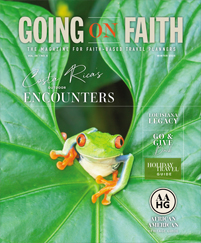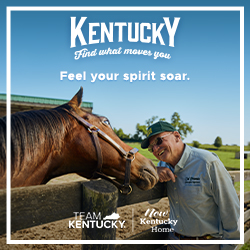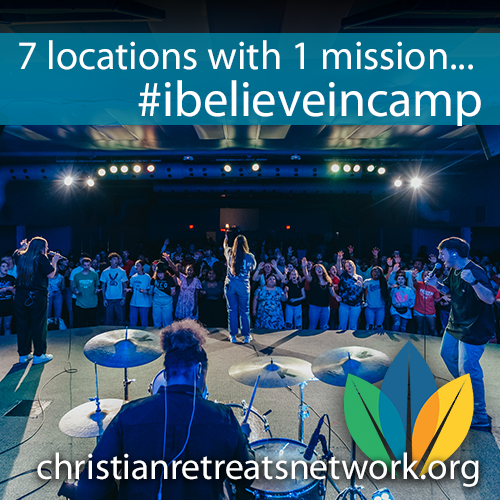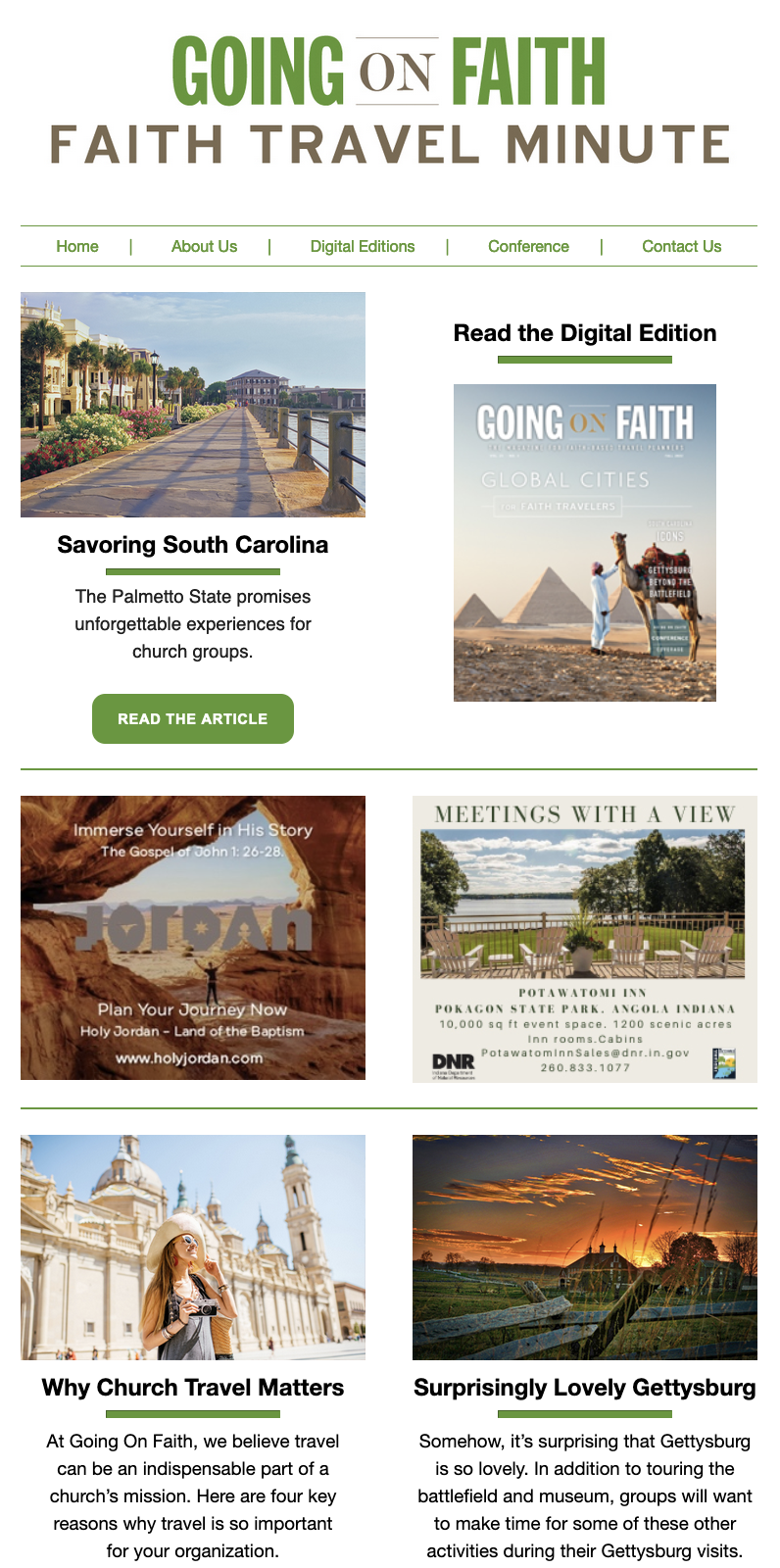For groups looking to explore the places where America’s earliest history and her spirituality intersect, nowhere in the country is as chock full of compelling and inspiring examples as Virginia.
Some of the nation’s oldest devotional spaces remain standing tall and proud in Old Dominion, a stirring testament to the importance faith played in the lives of the settlers who made this land home. And both George Washington and Thomas Jefferson, two Founding Fathers for whom freedom of religion was paramount, were born and lived throughout their lives in the commonwealth. Travel planners can string together visits to their homes and several of Virginia’s most historic churches for a pilgrimage that any patriotic American is sure to enjoy.
This itinerary travels the length of Virginia, beginning at Mount Vernon, just outside of Washington, D.C., which offers several major airports and an extensive highway system, making it an excellent entry point for group visitors. It then continues to Charlottesville and Richmond, before heading farther southeast to Jamestown. The tour ends in the little burg of Smithfield. From there, groups can fly out of Norfolk International Airport, just 35 miles away. Leaders should plan on four nights for this trip, adding another one or two if they would like to take advantage of additional attractions along the way.
Washington’s Homeplace in Mount Vernon
There’s so much to see and do at Mount Vernon that it’s a good idea to plan for groups to spend an entire morning or afternoon there. George Washington’s estate includes not only the expansive 18th century mansion, which features 21 rooms, but also multiple historic outbuildings, four gardens, a four-acre farm tended by costumed interpreters, functioning reconstructions of Washington’s grist mill and distillery, Washington’s tomb and two museums. Groups will want to refuel at the Mount Vernon Inn Restaurant, where with advanced notice, they can dine with actors portraying figures like Martha Washington.
Leaders should note that Mount Vernon’s Education Center, featuring relics such as a shard from George Washington’s pew, will be shuttered through 2025 for an extensive rebuild. However, late this summer Mount Vernon will unveil a much-anticipated Religious Freedom specialty tour. The nation’s first president proved his devotion to this principle by worshipping with different denominations during the Revolutionary War, as well as giving thanks to a common deity.
While you’re there: Located just 15 miles north of Mount Vernon, Washington, D.C., is home to the eight-floor Museum of the Bible. Immersive, interactive exhibits boasting thousands of artifacts, manuscripts on loan from the Vatican and a virtual reality look at biblical lands are just some of the wonders that await.
Jefferson’s Showplace in Charlottesville
Known for authoring the Declaration of Independence and serving as the third president of the United States, Thomas Jefferson was equally proud of penning the Virginia Statute for Religious Freedom. One of the most important documents in U.S. religious history, it guarantees the right of Virginians to worship as they choose without interference from the government. Jefferson selected this achievement as one of three to be listed on his headstone. Groups can visit at his gravesite at Monticello in Charlottesville, located two-and-a-half hours southwest of Mount Vernon. The home also features 29 stunning works of art with biblical subjects, including the painting of Salome “Bearing the Head of St. John the Baptist,” which hangs in the parlor.
Jefferson spent some four decades designing and refining his beloved Monticello. Today, the property includes the spectacular 33-room house; meticulously landscaped grounds, including flower and vegetable gardens; a visitor center with engaging exhibits about the man and his accomplishments; and an on-site café where groups can grab a bite. Leaders may want to arrange a special tour of the Thomas Jefferson Center for Historic Plants, offering unique preservation display gardens and a nursery.
While you’re there: Like Monticello, the University of Virginia was designed by Jefferson, and like Monticello it is a UNESCO World Heritage Site. Leaders can book a historical tour of the campus, said to be one of the world’s most beautiful, with the University Guide Service.
Experience The Speech That Birthed a Nation in Richmond
A little more than an hour southeast of Charlottesville is Richmond, Virginia’s historic capital city. It was here, inside stately St. John’s Church, where Patrick Henry gave his legendary “Give me liberty, or give me death!” speech. Henry delivered the address on March 23, 1775, during the Second Virginia Convention, a gathering of some 100 Colonial leaders that included George Washington and Thomas Jefferson. His passionate words helped inspire colonists to take up arms against British tyranny, and it was just 27 days later that the American Revolution’s first shots sounded at Lexington and Concord.
Constructed in 1741, St. John’s is Richmond’s oldest church. Groups can enjoy 35-minute private tours that typically include a discussion of not only the church and its cemetery but also Virginia Revolutionary War history, life in Colonial Virginia and Henry’s life and legacy. Private reenactments of the Second Virginia Convention are also available, with professional actors portraying nine delegates who engage in the debates leading up to Patrick Henry’s immortal declaration. St. John’s Visitor Center, featuring educational wall panels about the church, Colonial government and more, is also well worth a stop.
While you’re there: One of the country’s largest comprehensive art museums, the free Virginia Museum of Fine Arts boasts holdings of nearly 50,000 artworks spanning 6,000 years. Highlights include a superb collection of American art and a wide array of religious works from cultures around the world.
Jamestown, Where America Started
The first English settlement in North America, Jamestown was founded in 1607, when 104 colonists landed on the shores of what would become Virginia. Groups can explore the stories of their everyday lives and extraordinary sacrifices at Historic Jamestowne, tucked away an hour southeast of Richmond. The attraction, which sits on an island just outside Williamsburg, is the site of the original fort and settlement. It includes everything from active archaeological digs to the Archaearium museum, featuring a fascinating array of excavated religious artifacts. The rosary beads, crucifixes and medallions of Catholic saints exhibited there prove that settlers practiced a variety of religions at Jamestown, though the Church of England was the established faith.
Guided tours and programs open to groups can include living history interpreters and the chance to chat with archaeologists as they excavate the Jamestown ruins. Tours usually include stops at religious sites, including the remains of the first substantial church built at Jamestown, where Pocahontas famously married John Rolfe in 1614; a 17th-century brick church tower and cemetery; and the 1907 brick Memorial Church. If time permits, Jamestown Settlement — an excellent living history museum that approaches the same subject from a different angle — is just five minutes away.
While you’re there: Speaking of living history museums, the world’s largest is a must for any group visiting Virginia. Colonial Williamsburg encompasses 301 acres offering 89 historic buildings, including four taverns, a wealth of working tradespeople and two showstopping art museums. Plenty of special group packages are available, too.
Old Dominion’s Oldest Church in Smithfield
A 43-acre National Historical Landmark and National Patriotic Shrine, St. Luke’s Historic Church and Museum is a quick 60-minute drive southeast from Williamsburg, in the charming little town of Smithfield. The single-room brick building, believed to have been completed about 1685, is Virginia’s oldest church. Representing a rare example of Artisan Mannerism design — an eclectic if not downright offbeat type of 17th-century English architecture — St. Luke’s features everything from Romanesque to Gothic and Jacobean elements. While most of the original exterior remains, preservation campaigns in the 1890s and 1950s altered much of the interior.
Nonetheless, some artifacts remain, including a 17th-century communion table, a credence table and chancel chairs. Groups can see them on a private, 45-minute tour, which details St. Luke’s origins as an Anglican church and eventual conversion in the 19th century to an Episcopal house of worship. Other topics covered range from Colonial religious practices to an exploration of how this experience led the country’s founders to incorporate freedom of religion and separation of church and state into the U.S. Constitution.
While you’re there: Groups can stretch their legs and get another dose of history at the 208-acre Windsor Castle Park. It features not only woodland trails and plenty of scenic spots overlooking the Pagan River but also the park’s namesake, a manor house that dates to 1725.










